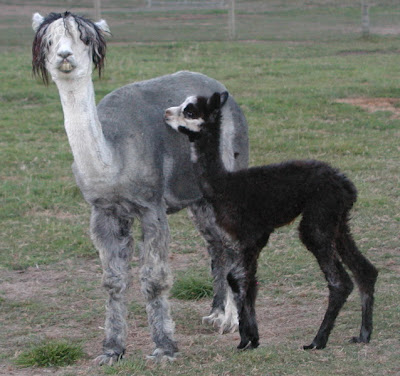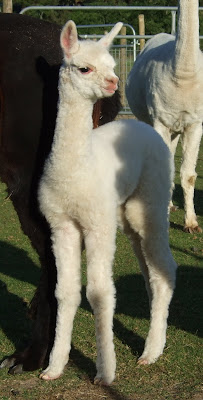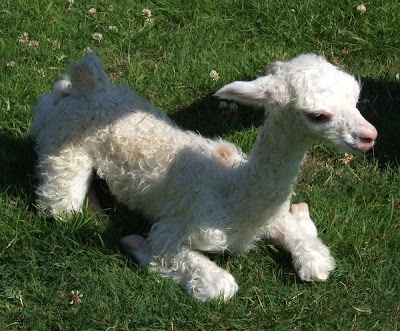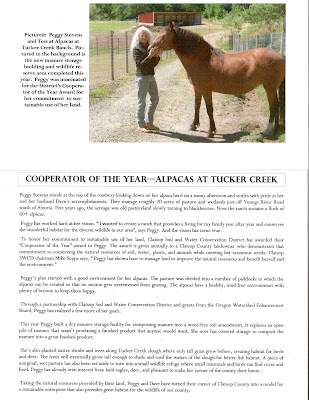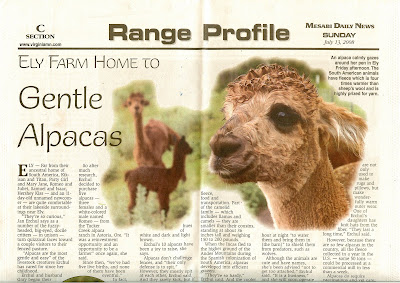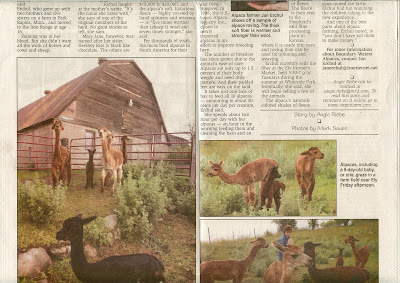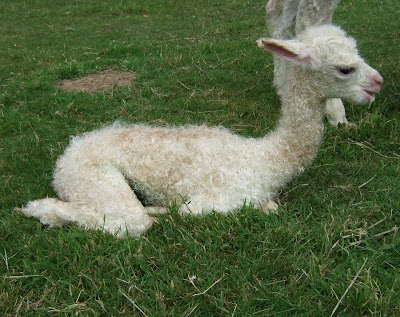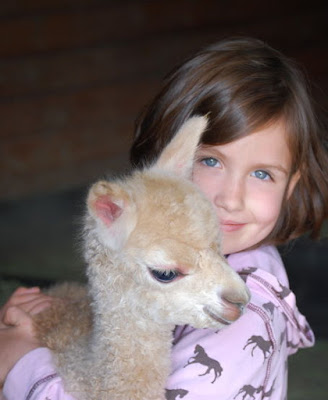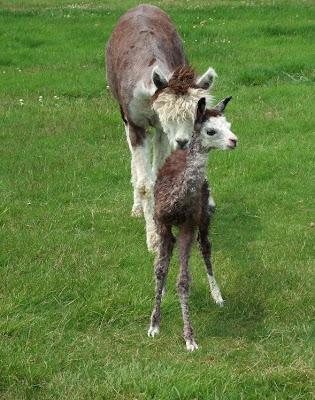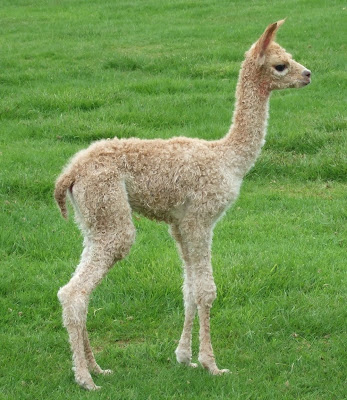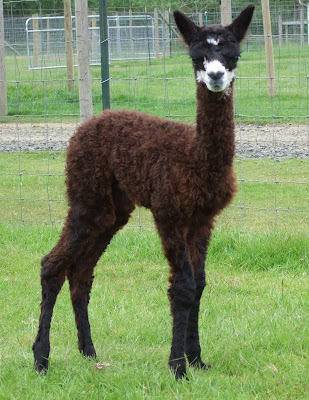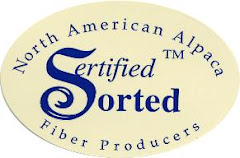This article by
JENNIFER LEVITZ appeared in the Wall Street Journal on Friday. This will probably not be the last such article to discuss investors turning to tangible investments. Also in line with that philosophy there is going to be a focus away from the 9 to 5 rat race toward a more simpler life style. Between the election and the bail outs our society is ready for a change and the alpaca industry has much to offer those wishing to make that transition.
Enjoy the article--it appears below:
Who can blame an investor for taking to the bottle?
Andy Pick, a 49-year-old stay-at-home father in Atlanta, recently bypassed the stock market for liquid assets -- $120,000 in champagnes. He bought 400 bottles, mostly 1996 vintage, that he says he plans to "sit on" for 10 or 15 years and then sell at a profit.
"It sure beats looking at a Merrill Lynch monthly statement," he says, adding, "The worst thing that could happen is that I drink all of it."
Given the gyrations in the financial markets, some investors are abandoning stocks and bonds and seeking refuge in unusual alternatives -- parking spaces, for instance, and condos in Peru. Sales of exotic livestock are up. The U.S. Mint has seen a gold-coin rush.

Associated Press
Peggy Parks invested in alpacas, which she believes have a better outlook than most mutual funds.
Investors have long turned to hard assets in market downturns, the idea being that if you invest in something real, it won't disappear, even if its value declines. But analysts say this downturn is different in that real estate, the most traditional safe haven, is also sinking. Between July 2006 and July this year, home prices dropped 19.5%, according to the S&P/Case-Shiller 20-city composite home price index.
After the market dropped in January, Steve Borter, the 56-year-old president of a heating-and-air-conditioning company, did invest in real estate, but not the usual sort. He became landlord of a single parking space in Chicago. He bought a 12-by-20-foot spot in the Field Harbor Parking Garage for $29,000 and rents it out. "The stock market is indicative of a lot of uncertainty. With a parking space, at least you end up with something," he says.
Peggy Parks, a 49-year-old auditor in Johnstown, Pa., turned to an unusual farm animal. "I've lost a fortune in stocks, and my 401(k) is falling through the floor. I feel comfortable in alpacas," she says. She invested $56,000 in a small herd that she believes has a better outlook than most mutual funds because of the animals' breeding potential.
The national Alpaca Registry Inc., in Lincoln, Neb., says registrations are on pace to rise 7% this year and currently stand at 140,297. Ms. Parks says a female of "medium quality" can fetch $10,000 and that prices have been rising, supporting her hopes that she'll see a profit on her alpaca portfolio in five years.
Tangible Assets
Financial firms are reporting that a growing number of retirees are rolling their money out of ordinary individual retirement accounts -- commonly stocks, bonds and mutual funds -- and into self-directed IRAs, where almost anything goes. "We've had people invest in a cypress farm in Costa Rica, and a condo in Croatia," says Tom Anderson, president of Pensco Inc., a San Francisco firm that has $3.3 billion in self-directed IRAs under custody. He says 20% more assets flowed in over the past three months than in the same period a year ago.

Pat Roque/Associated Press
The New Gold Rush
In Centennial, Colo., Tim Boykin, 56, a retired engineer, says he pulled his entire nest egg of nearly $1 million out of stock and bond funds in August and put it into a self-directed IRA. He invested some of the money in his niece's company -- which is building condos in Lima, Peru. While analysts warn that real-estate investments in emerging markets are risky, Mr. Boykin says he has done his research and remains confident: "I can see pictures of the land. I can see steel. I can see people working. When I put my money in a fund, I see a big list of things that don't sound good."
Ruff Times
Not everyone thinks alternative investments are a great idea. The Alabama Securities Commission over the weekend issued an "investor alert" urging caution. People are "panicking," says securities director Joseph Borg. He worries that investors who yank their money out of the stock market are prey for con artists hawking things like phantom oil wells.
Mr. Borg, past president of the North American Securities Administrators Association, adds that in past market downturns he saw people turn to chinchillas, worm farms and super-breeds of rabbits. Emus, too, were big. "Eventually, people got tired of them and just let them go," he says. "To this day, you'll be in West Texas and a big emu running wild will just come up next to your car."
Hard-asset gurus like Howard Ruff, a best-selling author who rose to fame in the inflationary 1970s, are convinced their moment has come again. "This is a big, big time, a very big time -- and this is just the beginning," says Mr. Ruff. He has been advising people to buy bags of pre-1965 U.S dimes and quarters, which are 90% silver and in limited supply.
Gold coins also are in great demand. Last week, the mint suspended sales of American Buffalo 24-karat gold coins because it can't keep up with soaring sales. Last month, a record 14,000 bidders -- 17% more than the previous high -- turned out for a coin-and-currency auction in Long Beach, Calif., that generated $35 million in sales.
 Bob Sale
Bob SaleBob Sale, a Blue Bunny brand ice-cream distributor in Colorado Springs, Colo., says he purchased American Eagle gold coins last week after his 401(k) retirement account tanked. "Holding them in your hand is like no other feeling," he says.
Mark Craddock, manager of Comic Book World, in Florence, Ky., says stock-market investors also are turning to superheroes. "There's kind of a buying frenzy" in vintage comic books, he says.
The "Silver Age Comic Book Pricing Index" of 32 frequently traded '60s comics, was up 14.2% in the 18 months ending in July, while the Standard & Poor's 500 stock index was down 11% in the same period. Mark Haspel, president of Certified Guaranty Co. in Sarasota, Fla., which grades comic books, often for investors, says it's on track to handle 200,000 books this year, up from 150,000 in 2007.
"Spiderman is going to be here in 20 years -- he's not going away," Mr. Haspel says.
Write to Jennifer Levitz at
jennifer.levitz@wsj.comCopyright 2008 Dow Jones & Company, Inc. All Rights Reserved















 Faiks' Elana along with her female cria at side, Tucker Creek's Toffee. Elana is a first generation Studmaster female out of Faiks' Athena and Studmaster El Toro. Elana has only had female cria to date. Toffee is the result of a breeding with Studmaster MSA Hemingway's Bogart.
Faiks' Elana along with her female cria at side, Tucker Creek's Toffee. Elana is a first generation Studmaster female out of Faiks' Athena and Studmaster El Toro. Elana has only had female cria to date. Toffee is the result of a breeding with Studmaster MSA Hemingway's Bogart.









